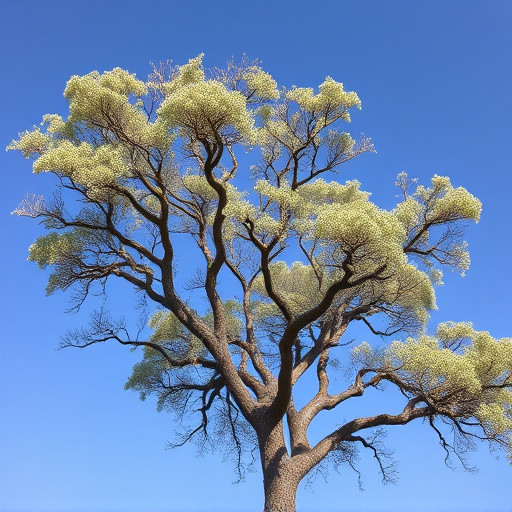Acacia trees, native to Africa, the Middle East, Australia, and Asia, are ecologically and culturally significant globally. They adapt to diverse climates and support biodiversity, with deep roots combating soil erosion and providing habitat for wildlife. Their unique adaptations include protective features against harsh conditions and herbivores, making them resilient ecosystem pillars. Revered in traditional cultures, acacias offer various products from wood to gums, contributing to agriculture and economies. However, they face threats like habitat destruction, logging, and climate change, emphasizing the need for conservation efforts to protect these valuable trees.
The acacia tree, a resilient and versatile genus of plants, has captivated humans for centuries. This article explores the global reach and remarkable attributes of Acacia trees, ranging from their diverse distribution across continents to their ecological roles and cultural significance. We delve into the various species, their unique adaptations, and their contribution to agriculture and economies worldwide. Additionally, we examine the challenges these trees face, emphasizing the importance of conservation efforts for this valuable resource.
- Global Distribution of Acacia Trees
- Ecological Significance and Benefits
- Varieties and Their Unique Adaptations
- Cultural and Historical Importance
- Acacia in Agriculture and Economy
- Conservation and Threats Faced
Global Distribution of Acacia Trees
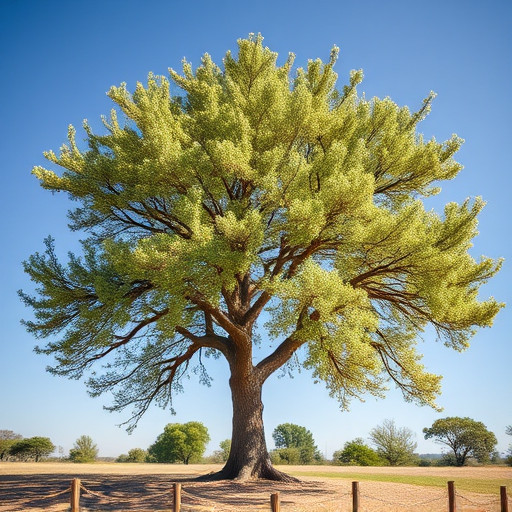
Acacia trees are native to various regions across the globe, boasting a diverse range of species and natural habitats. Their distribution stretches from Africa and the Middle East to Australia and parts of Asia, with some species adapting to tropical, subtropical, or even arid climates. This wide-ranging global presence has allowed acacias to play significant roles in different ecosystems and local cultures alike.
In Africa, numerous acacia species thrive, forming extensive forests and savannas. The African continent is home to iconic species like the Acacia nilotica and Acacia senegal, which have been integral to traditional medicine and local economies for centuries. In Australia, acacias are a prominent part of the unique flora, with the Acacia pycnantha, or Golden Wattle, serving as the national flower, symbolizing resilience and adaptability. Other regions, such as India and certain parts of Southeast Asia, also harbor diverse acacia varieties, contributing to their cultural and ecological significance worldwide.
Ecological Significance and Benefits
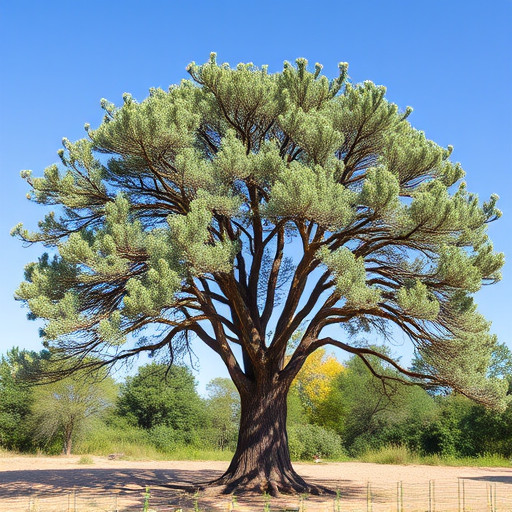
The Acacia tree plays a vital role in its respective ecosystems worldwide, offering numerous ecological benefits. Its deep roots help prevent soil erosion, especially in arid and semi-arid regions where it is often planted as a windbreak. The trees provide habitat and food for various wildlife, from birds and insects to small mammals, contributing to biodiversity. Many acacia species have adaptive mechanisms such as thorns or resinous leaves that deter herbivores, ensuring their survival in harsh environments.
Furthermore, these trees are known for their ability to thrive in poor soil conditions, making them excellent candidates for reforestation projects. They can also help restore degraded lands and support local ecosystems’ resilience. Acacia species produce a diverse range of fruits, seeds, and nectar, which contribute to local food webs and support various pollinators, including bees and butterflies. This ecological significance makes the acacia tree an invaluable asset in conservation efforts and sustainable land management.
Varieties and Their Unique Adaptations

The Acacia tree encompasses a diverse range of species, each with its own unique characteristics and adaptations. These variations have enabled them to thrive in various environments worldwide, from arid deserts to humid tropical forests. One notable adaptation is their ability to withstand harsh conditions; many acacia trees have developed thick, waxy leaves to reduce water loss in dry climates. Some species even feature spines instead of leaves for protection against herbivores and extreme weather.
Additionally, acacias are known for their intricate root systems that help stabilize them in loose soils and facilitate efficient water absorption. Their legume-like structures not only contribute to nitrogen fixation in the soil but also serve as a means of reproduction, attracting pollinators with nectar-rich pods. This remarkable versatility has made acacia trees integral components of ecosystems across different continents, offering both ecological benefits and aesthetic appeal.
Cultural and Historical Importance
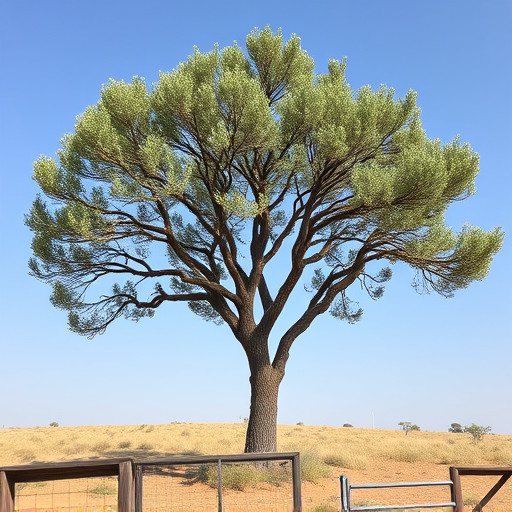
The Acacia tree holds immense cultural and historical significance across various parts of the world, particularly in arid regions where it thrives. In many indigenous communities, acacia species have been integral to traditional lifestyles for centuries. Its multi-purpose nature has earned it a special place in these cultures; from providing food and shelter to serving as a medicinal herb, the acacia tree is deeply woven into the fabric of local lore and practice.
Historically, these trees have played pivotal roles in shaping landscapes and societies. Ancient civilizations valued them for their hard wood used in construction and furniture-making, while their resilient nature made them valuable resources during times of scarcity. Today, the acacia continues to be a symbol of resilience, adaptability, and intergenerational knowledge transfer, reminding us of our connection to both the natural world and one another.
Acacia in Agriculture and Economy

Acacia trees have found significant utility in agriculture and economies worldwide, primarily due to their diverse range of products and versatility. Their hard, durable wood is a valuable resource for construction, furniture making, and even as a biofuel alternative. The trees’ deep root systems make them excellent for soil stabilization and erosion control, particularly in arid regions. Additionally, acacia gums and resins have been traditionally used in medicine and pharmaceuticals, contributing to local economies through the export of these natural products.
Beyond their practical uses, acacia trees play a crucial role in agroforestry systems, providing shelter and food sources for livestock and supporting the growth of other crops. In many developing countries, small-scale farmers cultivate acacia trees for their income-generating potential, offering a sustainable source of revenue and improving local livelihoods. As such, the economic significance of acacia trees extends far beyond their immediate environments, making them an important component in global agricultural landscapes.
Conservation and Threats Faced
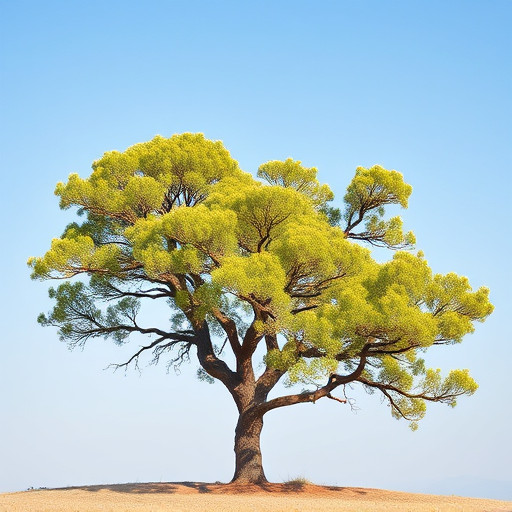
The acacia tree, renowned for its resilience and diverse species, faces significant conservation challenges worldwide. Habitat destruction and fragmentation are major threats, as human settlements and agricultural expansion continue to encroach on natural habitats. This leads to reduced gene flow between populations, making them more susceptible to diseases and environmental changes.
Climate change poses another critical risk, with shifting weather patterns impacting the tree’s growth and distribution. Droughts and extreme temperatures can stress acacia trees, leading to increased mortality rates. Additionally, illegal logging and unsustainable harvesting practices deplete resources and disrupt ecosystems. Conservation efforts are crucial to safeguarding these valuable trees, including habitat restoration projects, sustainable land management, and stricter regulations to combat illegal logging.
The Acacia tree, with its diverse range and remarkable adaptations, plays a vital role in ecosystems worldwide. From providing habitat and food sources to humans and wildlife, to its potential economic benefits, conservation efforts are crucial to ensure these trees thrive for generations to come. Understanding their global distribution and unique characteristics empowers us to protect and appreciate the Acacia’s significant impact on both natural landscapes and human societies.
